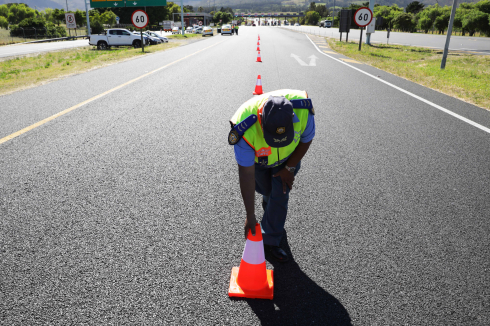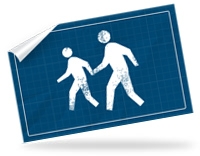Last week, 64 people were arrested by Western Cape Provincial Traffic officers on suspicion of driving under the influence of alcohol. During the same period, 15 pedestrians were killed in traffic crashes in our province.
News
Latest news, speeches, media alerts and publications.

Minister Robin Carlisle Speaks on Child Road Safety / 16 August 2012
Media Statement by Robin Carlisle, Minister of Transport and Public Works
It is sobering to note that our record of road deaths and crashes as a country is very poor. I estimate that close to 18 000 people die on South Africa’s roads every year. It is also sad to see that as a country, we have come to accept the prevalence of road carnage as part of our daily lives. This shouldn’t be the case. Road crashes are violent, unnecessary and most importantly, avoidable. Through our Safely Home campaign, we continue to target road safety issues in an aim to reduce the number of people killed on the province’s roads by 50% by 2014.
One of the key factors in changing inappropriate behaviour on our roads is imposing adequate consequences.
In the Western Cape, and in the City of Cape Town, we have:
- Impounded cellphones from drivers caught using them while driving.
- Conducted vehicle inspections through our roadblocks.
- Implemented the Average Speed Over Distance cameras (ASOD) that calculate the average speed of a vehicle from the time it passes the first camera until it passes the second camera (leading to a drop in the number of drivers arrested for doing excessively high speeds).
- Conducted fatigue management roadblocks targeted at long distance public transport.
The Western Cape is the only province that publishes the names of convicted drunk drivers through our Name and Shame project. These have been successful in changing behaviour on our roads.
We continue to target irresponsible and reckless drivers on our roads in the stern action that we take. It is interesting to note however, that roughly 94% of killers on the road are men, while they constitute 61% of all drivers. Children, as a group, have not been immediately visible in the past when implementing measures that reduce our fatalities on our roads. This will no longer be the case.
The statistics relating to pedestrian deaths are startling. In 2011, The Red Cross Children’s hospital admitted 752 children involved in crashes as pedestrians. One of the worst roads for pedestrians in this regard is Landsdowne Road. The PET survey conducted by the Department of Community Safety established, amongst other things, that this road has a serious lack of designated pedestrian crossing areas as well as public transport stopping areas. There are also no cycle lanes on this road.
The total number of pedestrian crashes recorded for Landsdowne Road between 2003 and 2008 was 1 459. Altogether 2 053 pedestrian casualties were recorded in these crashes over the same period, indicating that in some crashes more than one pedestrian was involved. Statistics show that a majority of these casualties are recorded over the weekend. We will be looking at children and their safety in these areas.
Another very important element of child road safety is restraints. The national statistics in terms of restraints, particularly for children, are shocking. In 2010, it was observed that 92% of back-seat passengers (including children) are not wearing seat belts. The only way in which a culture of buckling-up can be achieved is through partnerships between government and organizations like ChildSafe. These partnerships should strive to encourage responsible behaviour by creating a personal virtuousness amongst people, where they can feel proud in making the decision to act responsibly.
More News Posts:
-
-
On Saturday, 23 March 2024, the Western Cape Government (WCG) officially launched our Easter road safety campaign for 2024.
-
The Western Cape Government is offering FREE ten-point vehicle checks by qualified examiners from Saturday, 23 March to Thursday, 28 March at venues in Cape Town and Drakenstein.
-
It is with great sadness that I extend my condolences to the loved ones of the ten people – seven adults and three children – who died in a road crash on the N7 between Vanrhynsdorp and Klawer on Sunday 17 March 2024.






